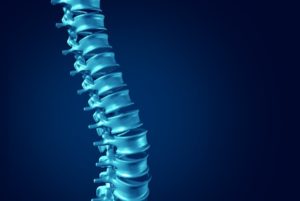
Tether breakage after vertebral body tethering (VBT) leads to a consistent loss of correction when it occurs within the first 12 months. However, it has limited clinical relevance when tether breakage occurs after this timepoint, new research, published by Alice Baroncini (RWTH Aachen University Clinic, Aachen, Germany) et al in the European Spine Journal, suggests.
The research team note that tether breakage is a frequent mechanical complications following VBT, but that not all patients with a breakage show loss of correction. The reason behind this clinical finding has not yet been clarified, they state.
Baroncini et al hypothesised that the integrity of the tether is relevant only in the early stages after VBT, when it drives growth modulation and tissue remodelling. After these mechanisms have taken place, the tether loses its function and a breakage will not alter the new shape of the spine. Thus, tether breakage would have a greater clinical relevance when occurring shortly after surgery, they posited.
The study included consecutive patients who underwent VBT and had a minimum follow-up of two years.
The difference in curve magnitude between the first standing X-ray and the last follow-up was calculated (Cobb angle). For each curve, the presence and timing of tether breakage were recorded. The curves were grouped according to if and when the breakage was observed (no breakage, breakage at 0–6 months, 6–12 months, >12 months). The Cobb angle was compared among these groups with the analysis of variance (ANOVA).
During the observation period, 125 patients underwent VBT for adolescent idiopathic scoliosis and were screened for inclusion. Nine lacked a minimum two-year follow-up and 12 did not present imaging of sufficient quality. Thus, 104 patients and 152 curves were available for the study.
The mean follow-up was 27.4 months (range 24–48 months). Overall, the preoperative mean Cobb angle of the instrumented curves measured 58.2 ± 12.1°, bending down to 38.8 ± 15.8° in side-bending X-rays. The instrumented curves measured 25.6 ± 11.4° at the first standing X-ray and 34.1 ± 9.9° at the last follow-up. The mean Cobb angle was 8.5 ± 8.7°.
Of the 152 curves, 68 had no breakage, 12 had a breakage at 0-6 months, 37 had a breakage at 6-12 months and 35 had a breakage after 12 months. The ANOVA found a significant difference in the Cobb angle among the groups (sum of square: 2,553.59; degree of freedom: three; mean of square: 851.1; Fisher test: 13.8; p<0.0001).
Patients with no breakage or breakage after 12 months had similar Cobb angles (mean 4.8° and 7.8°, respectively; p=0.3), which were smaller than those in the 0-6 month or 6-12 month groups (15.8° and 13.8°, respectively; p=0.3).













